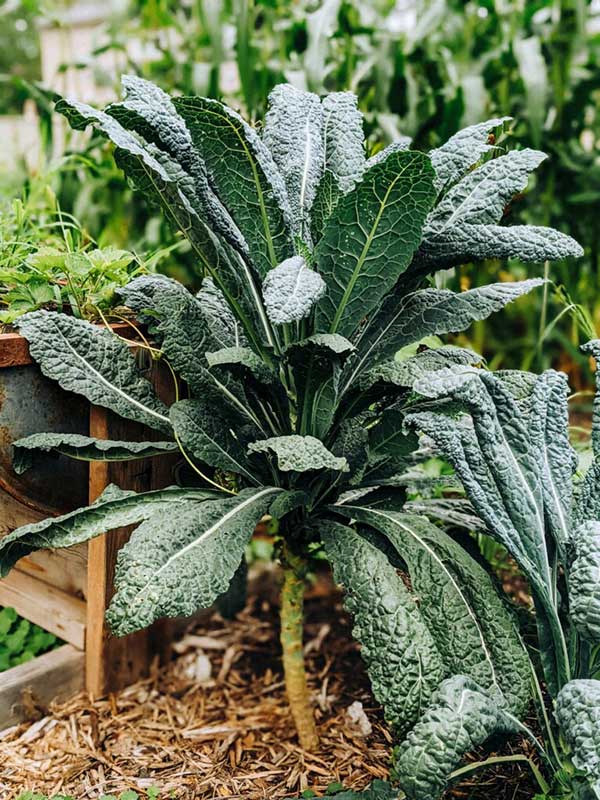Kale, or Brassica oleracea, is a plant of extremes. Whether you love or dislike the taste, there is no denying that kale is a nutrient powerhouse. It is filled with vitamins, minerals, antioxidants, beta-carotene, cancer fighting compounds, and a goodly amount of fiber. If that’s not enough, add to the list that it is also an easy plant to grow. Plan to plant a fresh crop three to four weeks before the first fall frost for a tasty late fall harvest.
Late season kale seeds are best planted ¼” – ½” deep in well fed, 6.0 to 7.5 pH soil with a temperature between 40 degrees and 85 degrees F for optimal germination. Full sun placement is best for maximum leaf development. If air temperatures rise into the high 80’s and 90’s, early fall growth may slow but will catch up as weather cools. Water is especially essential for kale. Be sure the plantings receive the equivalent of one to one and a half inches of rainfall per week. Yes, that means the gardener must monitor rainfall and supplement as needed. Adequate sun and moisture will reap benefits in tender leaves. Do not worry over the looming, light fall frosts. A bit of a nip on those newly growing plants will turn starches into sugars and result in a slight, bright sweetness.
Late season planting allows the gardener to take advantage of the year’s successes. Kale, being a heavy feeder, does very well when planted to follow harvested legumes. When placing late season plantings, locate kale near fully developed nasturtiums to minimize leaf insect damage. The nasturtiums will invite the beetles to feed, diverting and rerouting critters away from the kale leaves. Most herbs do well with kale. Chamomile, dill, and garlic enhance kale flavor when planted closely together. Take advantage of the abilities of nepeta, rosemary, sage, and thyme to mask the scent of the kale and deter cabbage moth activity. Avoid planting kale with pole beans, tomatoes, and strawberries, as they do not play well, and none will perform optimally.
Harvest timing will depend on chosen cultivar. Leafy cultivars, Lancinato or Dinosaur kale for one, will welcome outer leaf harvesting and continue to produce up the main stem. The plant looks rather like a miniature palm tree as the growing season dwindles. Some of the curly and Russian types prefer to have the entire leafy portion cut back two to three inches from the soil surface to spur leaf regeneration. The ornamental types, developing glorious heads, have never had much culinary appeal. Flavor was sacrificed when breeding for appearance – and thank goodness – as they do look divine in the fall landscape.
All kales will withstand a bit of frost, some more than others. If extending a harvest past frost is the goal, expect to provide adequate cover when the temperatures do their seasonal drop. Look for cloth with a bit of heft for full bed coverage, supplemental light, and a possible auxiliary heat source for the northern climes. Even with the extra work, kale is an easy grow.
